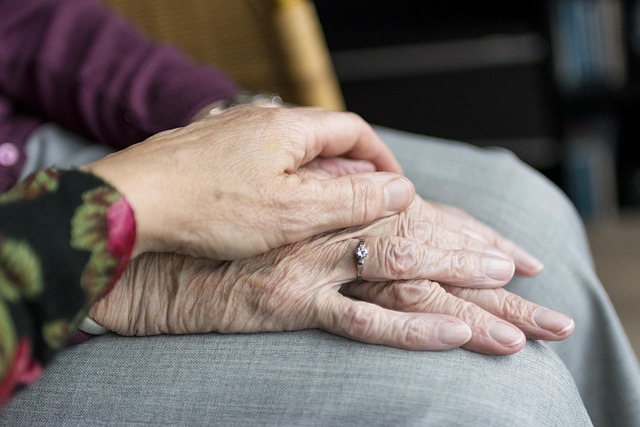Oregon's court system handles grandparent rights through trial, appellate, and juvenile courts. Grandparents must prove a substantial bond with grandchildren to establish eligibility. The process involves petitioning, legal proceedings, evidence presentation, and a judge's decision based on the child's best interests. Consulting an attorney, filing petitions, attending hearings, and providing relevant documentation are key steps in navigating this intricate grandparent rights court process.
“In Oregon, understanding the court system is pivotal for grandparents seeking their rights. This article provides a comprehensive guide to navigating the legal landscape and ensuring grandparent rights are protected. We delve into Oregon’s court system, explore the legal basis and eligibility criteria for grandparent rights, offer a step-by-step guide through the court process, and equip grandparents with strategies to overcome challenges in fighting for their parental rights.”
- Understanding Oregon's Court System: An Overview
- Grandparent Rights: Legal Basis and Eligibility
- The Court Process: Step-by-Step Guide for Grandparents
- Navigating Challenges: Fighting for Parental Rights
Understanding Oregon's Court System: An Overview

Oregon’s court system, much like other states, is designed to uphold justice and resolve legal disputes. At its core, it comprises several key components: the trial courts, appellate courts, and a distinct juvenile court system. The grandparent rights court process often navigates these courts, especially when families face custody or visitation conflicts.
In Oregon, the trial court serves as the initial point of entry for most legal matters, including grandparent rights cases. Here, parents, grandparents, and other family members present their arguments and evidence to a judge who makes decisions based on state laws and the best interests of the child. If either party is dissatisfied with the outcome, they can appeal to higher courts, such as the Oregon Court of Appeals or the Oregon Supreme Court, which review the case for legal accuracy and fairness. Understanding this grandparent rights court process is crucial for all involved parties in ensuring their rights are protected under Oregon law.
Grandparent Rights: Legal Basis and Eligibility

In Oregon, grandparent rights are established through specific legal avenues, offering a structured framework for grandparents to maintain and foster their connection with their grandchildren. The court system plays a pivotal role in this process, ensuring fairness and the best interests of both the child and their grandparents. Grandparent rights are granted based on a legal basis that considers the grandchild’s well-being and the grandparent’s role in their life.
To establish eligibility for grandparent rights, individuals must demonstrate a significant relationship with the grandchild, often involving regular visitation, caregiving, or a history of involvement in the child’s life. The court process involves filing a petition, which outlines the grandparent’s request and justifies their right to be involved in the child’s life. This is followed by legal proceedings where both parties present evidence, and the judge makes a decision based on Oregon’s established laws regarding grandparent rights.
The Court Process: Step-by-Step Guide for Grandparents

Navigating the Oregon court system to protect or gain grandparent rights can be a complex and emotional journey. Here’s a step-by-step guide for grandparents looking to understand the process:
1. Consult with an Attorney: The first step is to consult with a family law attorney experienced in grandparent rights cases. They can provide legal guidance tailored to your specific situation, helping you understand your options and the best course of action. This is crucial as laws vary, and an attorney can ensure compliance with Oregon’s requirements.
2. Petition for Grandparent Time: If you seek visitation or custody, you’ll need to file a petition with the court. This formal request outlines your reasons and proposed schedule for time with the grandchild. The petition should include any relevant documentation, such as proof of family relationship and a plan for safe and consistent visitation.
3. Service of Process: Once filed, the petition is served to the child’s parents, giving them official notice of the proceedings. This step is essential for the case to move forward, ensuring all parties are aware and can participate.
4. Court Hearing: A hearing date will be set, where both sides present their cases. Grandparents and parents offer evidence and arguments regarding what’s in the child’s best interest. The judge considers this information when deciding on visitation or custody arrangements.
5. Judgment and Order: After the hearing, the court issues a judgment and order outlining the decision. This document specifies the rights and responsibilities of both grandparents and parents, including visitation schedules, holiday arrangements, and any other relevant terms.
Navigating Challenges: Fighting for Parental Rights

Navigating the complex Oregon court system to protect or fight for grandparent rights can be a challenging yet essential task. When a family situation arises where a parent’s ability to care for their child is in question, grandparents may find themselves at a crossroads, eager to step in and provide support but uncertain about their legal standing. Understanding the court process is crucial in these scenarios.
In Oregon, the legal framework surrounding grandparent rights is designed to balance the interests of parents and relatives while ensuring the well-being of children. Grandparents who wish to challenge or establish visitation or custody rights must be prepared for a detailed court process. This often involves filing petitions, attending hearings, and presenting evidence to demonstrate their ability to provide a stable and loving environment for the child. The court will carefully consider various factors, including the child’s best interests, the relationship between the grandparent and the child, and any potential impact on the family dynamic.














